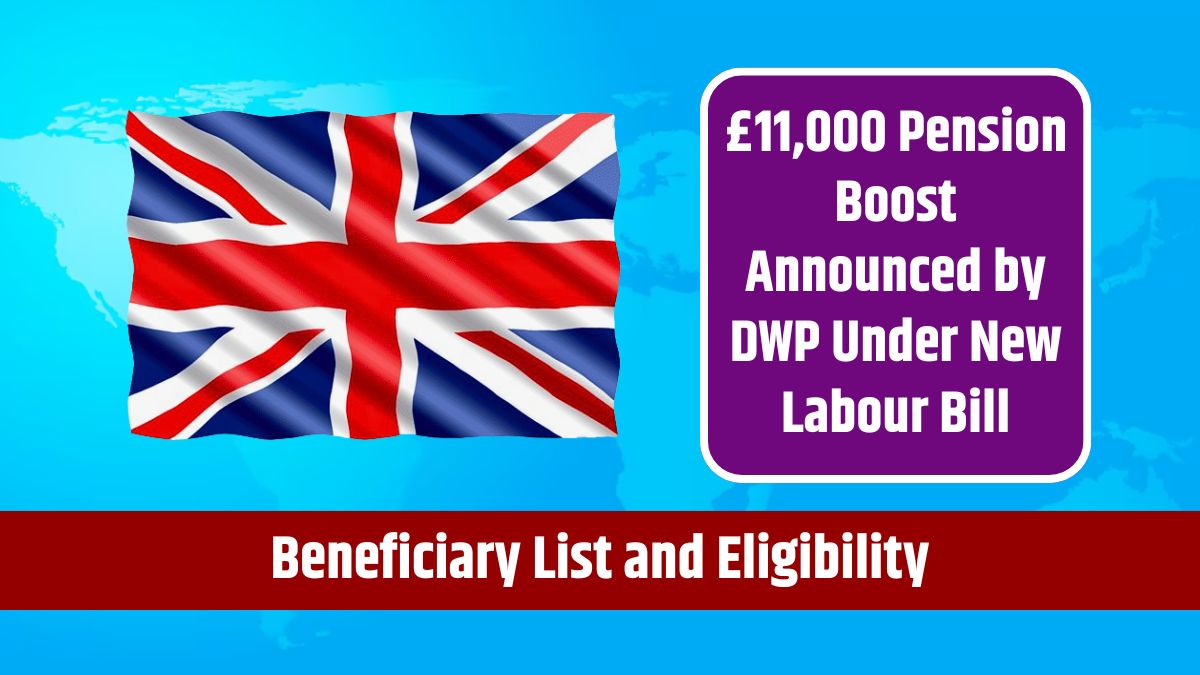In a significant move to enhance retirement savings for millions of Britons, the Department for Work and Pensions (DWP) has introduced a new policy through the Labour Party’s Pensions Schemes Bill. Announced during the King’s Speech, this bill promises an average increase of £11,000 in pension pots by the time of retirement.
This article looks into the key elements of this initiative, including its potential beneficiaries, eligibility criteria, and what the bill means for the future of pensions in the UK.
£11,000 Pension Boost
The DWP’s Pension Schemes Bill is designed to improve retirement outcomes by making significant changes to how pensions are managed and accumulated. Here’s how the £11,000 boost might be realized:
Enrollment Enhancements
The bill may propose changes to the existing automatic enrollment system, which requires employers to enroll their employees into workplace pensions automatically. Potential changes could include:
- Increased Contribution Rates: Raising the percentage of earnings that employees and employers contribute to pension pots, leading to larger savings over time.
- Lowering the Age for Automatic Enrollment: Bringing younger workers into the pension system earlier in their careers, allowing for more years of contributions and, consequently, larger retirement savings.
Pension Pot Consolidation
Many workers accumulate multiple small pension pots as they move between jobs. The bill could address this issue by simplifying the process of consolidating these pensions into a single, larger pot. This would reduce management fees and could improve investment returns, making pensions easier to manage and potentially increasing their value.
Investment Incentives
The DWP suggests that the bill could encourage greater investment within the UK pension industry, which is currently valued at around £2 trillion. By offering more investment options and possibly introducing incentives such as tax breaks, the bill aims to boost the overall growth and returns of pension funds, benefiting savers in the long run.
Beneficiaries Pension Boost
The DWP estimates that around 15 million people could benefit from the changes proposed in the Pension Schemes Bill. The key groups include:
Employees
Workers who are currently enrolled in workplace pension schemes, particularly those with lower contribution rates, stand to gain the most from increased contributions and better management of their pension savings.
Young Workers
Individuals who are just starting their careers could see significant long-term benefits from earlier enrollment and higher contributions, leading to a substantial increase in their retirement savings by the time they retire.
Multiple Pension Pots
Those who have accumulated several small pension pots throughout their careers could benefit from consolidation, simplifying their pension management and potentially increasing their overall savings through reduced fees and better investment returns.
Eligibility
While the announcement of the £11,000 Pension Boost is promising, the specific details regarding eligibility are still developing as the bill progresses through Parliament. Here are some potential factors that might determine eligibility:
National Insurance Contributions
Eligibility may be tied to an individual’s National Insurance contributions. Those with a consistent history of contributions might be more likely to benefit from the full £11,000 boost.
Earnings Thresholds
There could be minimum or maximum earning thresholds that impact who qualifies for the full benefit or a reduced benefit. These thresholds would ensure that the boost is targeted at those most in need of additional retirement savings.
Existing Private Pensions
The impact of the bill on individuals with existing private pensions could vary. Those relying solely on workplace pensions might see a different level of benefit compared to those with additional private pension arrangements.
What You Need to Know
While the £11,000 Pension Boost announced by the DWP is a positive development, several details remain unclear:
- Automatic Enrollment Changes: The exact nature of changes to automatic enrollment, such as contribution increases or age adjustments, has yet to be fully disclosed.
- Pension Pot Consolidation: The bill’s impact on consolidating pension pots and the specific process involved remains to be detailed.
- Investment Incentives: The bill’s proposals for investment incentives, including potential tax breaks or new investment options within pension schemes, are still being developed.
As the bill moves through Parliament, more details will emerge, and it will be crucial for individuals to stay informed about how these changes might affect their retirement planning.
The Labour Party’s Pension Schemes Bill presents an exciting opportunity for millions of Britons to enhance their retirement savings. The potential £11,000 boost is a significant step towards improving financial security in retirement and fostering growth within the pension industry. As the bill progresses, staying updated on its development will be essential for those looking to maximize their pension benefits.
FAQs
Who will benefit from the £11,000 Pension Boost?
Around 15 million people, including employees, young workers, and those with multiple pension pots.
What changes could the bill introduce?
Potential changes include increased automatic enrollment contributions and pension pot consolidation.
How will eligibility be determined?
Eligibility may depend on factors like National Insurance contributions and income thresholds.
When will more details about the bill be available?
Details will become clearer as the bill progresses through Parliament.
What impact will the bill have on the pension industry?
The bill aims to boost retirement savings and foster growth in the UK pension industry.
















